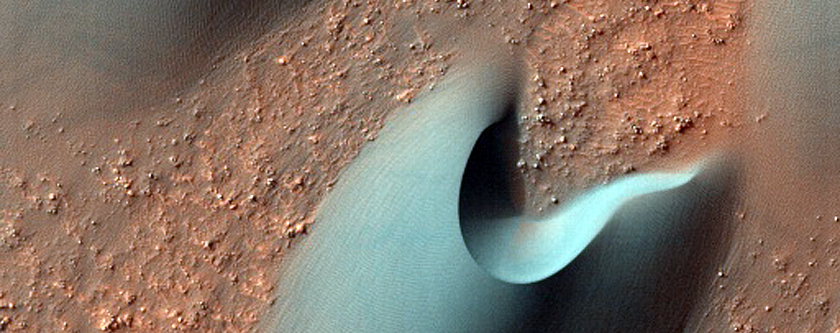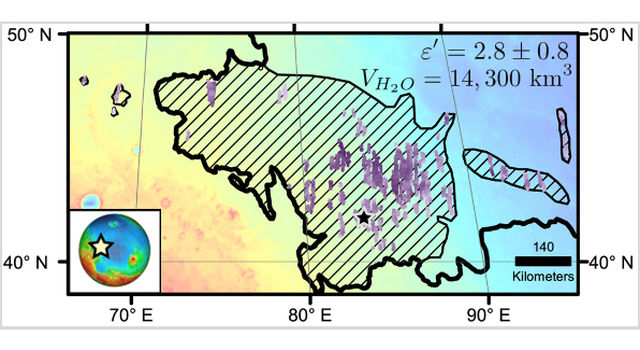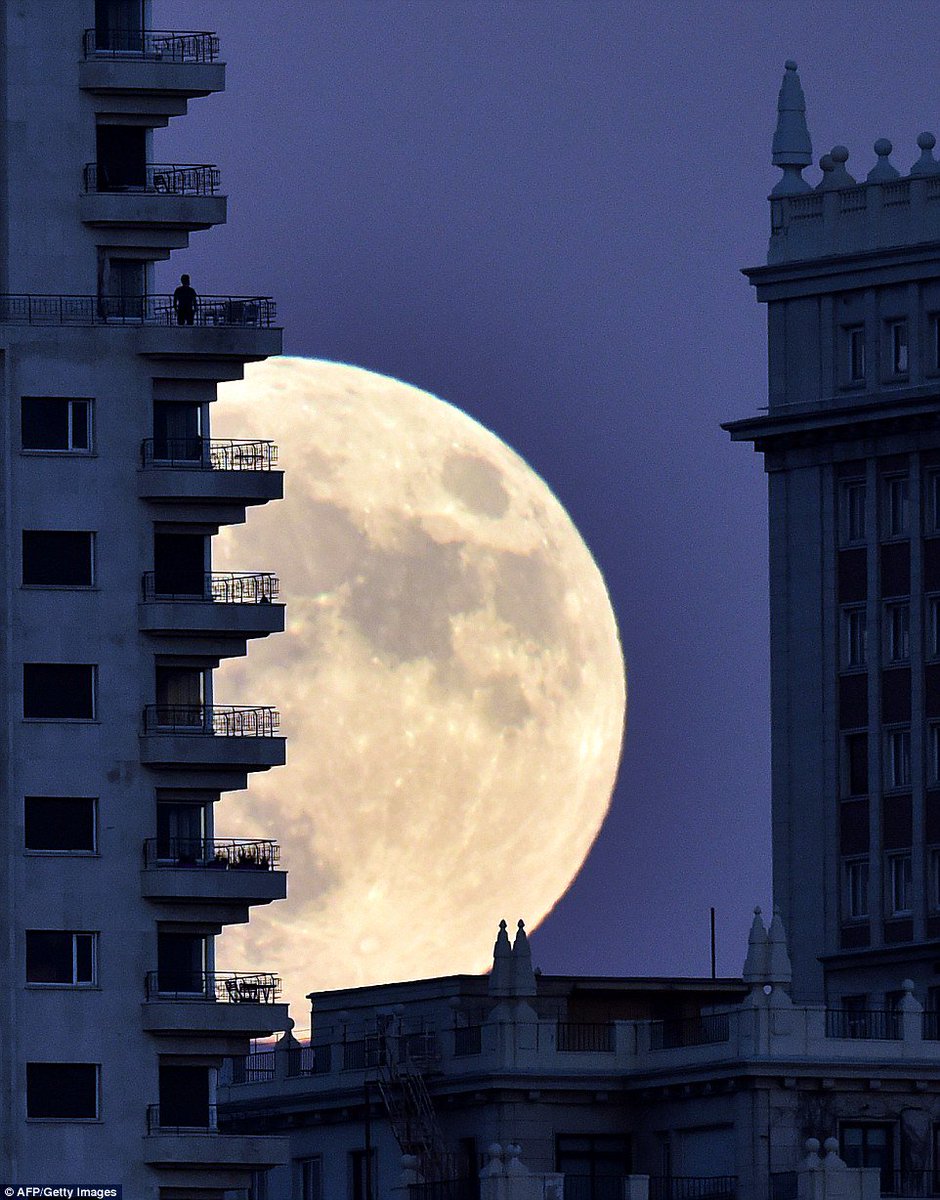Astronomy & Space Exploration
- Thread starter MrMarcello
- Start date
You are using an out of date browser. It may not display this or other websites correctly.
You should upgrade or use an alternative browser.
You should upgrade or use an alternative browser.
- Joined
- Jan 3, 2009
- Messages
- 46,348
Apparently it wasn't actually live.
Has anyone read up on the new research suggesting Dark Energy may not be "all that" ? As in, the Universe is actually expanding at a constant rate, as opposed an an accelerated one as previously thought.
- Joined
- Mar 22, 2014
- Messages
- 15,552
- Supports
- Piracy on the High Seas.
Yep. Not convinced by their statistical findings and suggested conclusion, which is why it's not getting a lot of traction in most mainstream scientific publications. The paper is rather inconclusive in itself (for now), and the whole thing hasn't been peer reviewed just yet (particularly a deeper verification of their statistics, though it's unlikely that the figures are fudged up):Has anyone read up on the new research suggesting Dark Energy may not be "all that" ? As in, the Universe is actually expanding at a constant rate, as opposed an an accelerated one as previously thought.
http://www.nature.com/articles/srep35596Whether the expansion rate is accelerating or not is a kinematic test and it is only for ease of comparison with previous results that we have chosen to show the impact of doing the correct statistical analysis in the ΛCDM framework. In particular the ‘Milne model’ refers here to an equation of state p = −ρ/3 and should not be taken to mean an empty universe. For example the deceleration due to gravity may be countered by bulk viscosity associated with the formation of structure, resulting in expansion at approximately constant velocity even in an universe containing matter but no dark energy. Such a cosmology is not prima facie in conflict with observations of the angular scale of fluctuations in the cosmic microwave background or of baryonic acoustic oscillations, although this does require further investigation. In any case, both of these are geometric rather than dynamical measures and do not provide compelling direct evidence for a cosmological constant — rather its value is inferred from the assumed ‘cosmic sum rule’: ΩΛ = 1 − Ωm + Ωk. This would be altered if e.g. an additional term due to the ‘back reaction’ of inhomogeneities is included in the Friedmann equations31.
The CODEX experiment on the European Extremely Large Telescope will aim to measure the ‘redshift drift’ over a 10–15 year period to determine whether the expansion rate is really accelerating.
That said, even Perlmutter's Supernova Cosmology Project/Dark Energy hypothesis was an arrow in the dark, and the best of a bunch of obscure suggestions - which is why certain factions of community got behind it - they just had no other explanation for it, so the mysterious Dark Energy concept was easy to employ as Einstein's enigmatic cosmological constant, merely because it made intuitive sense. Most of these things are half baked and get disproven over time - once we gain a greater (yet still incomplete) understanding of the fundamental physical mechanics of the cosmos. Sure hope it's disproven for good, though. The mere thought that we are forever bound to this universe, and the whole fabric is eventually going to ve ripped apart because of the acceleration to >>c is so morbid. Plus, we won't ever be able to trace the big bang because the light will never-ever reach us.
- Joined
- Mar 22, 2014
- Messages
- 15,552
- Supports
- Piracy on the High Seas.
SwansonsTache
incontinent sexual deviant & German sausage lover
http://channel.nationalgeographic.com/mars/
Looking forward to this. First episode available for streaming from the link above.
"
MARS
The year is 2033, and humanity's first crewed mission to Mars is about to become a reality. As a clock counts down the final 90 seconds to landing, an expert crew of astronauts endures the final harrowing moments before touching down on the red planet. Even with the best training and resources available, the maiden crew of the Daedalus spacecraft must push itself to the brink of human capability in order to successfully establish the first sustainable colony on Mars. Set both in the future and in the present day, the global miniseries event MARS blends feature film-caliber scripted elements set in the future with documentary vérité interviews with today’s best and brightest minds in modern science and innovation, illuminating how research and development is creating the space technology that will enable our first attempt at a mission to Mars."
Looking forward to this. First episode available for streaming from the link above.
"
MARS
The year is 2033, and humanity's first crewed mission to Mars is about to become a reality. As a clock counts down the final 90 seconds to landing, an expert crew of astronauts endures the final harrowing moments before touching down on the red planet. Even with the best training and resources available, the maiden crew of the Daedalus spacecraft must push itself to the brink of human capability in order to successfully establish the first sustainable colony on Mars. Set both in the future and in the present day, the global miniseries event MARS blends feature film-caliber scripted elements set in the future with documentary vérité interviews with today’s best and brightest minds in modern science and innovation, illuminating how research and development is creating the space technology that will enable our first attempt at a mission to Mars."
I've only read the media covering it. Would be amazing if the idea of Dark Energy dissolves away. 3 Sigma is still 99% certain though.Has anyone read up on the new research suggesting Dark Energy may not be "all that" ? As in, the Universe is actually expanding at a constant rate, as opposed an an accelerated one as previously thought.
- Joined
- Mar 22, 2014
- Messages
- 15,552
- Supports
- Piracy on the High Seas.
While we’re on the topic of Mars, LPL has released over 2000 images of its surface over the last 3 months:
http://www.uahirise.org/releases/aug2016/
http://www.uahirise.org/releases/sept2016/
http://www.uahirise.org/releases/oct2016/



http://www.uahirise.org/releases/aug2016/
http://www.uahirise.org/releases/sept2016/
http://www.uahirise.org/releases/oct2016/



donkeyfish
Full Member
http://phys.org/news/2016-11-theory-gravity-dark.html
Will dark matter go into history as another "ether"? I'm not a physicist, so not sure on the nuances. Gotten a decent amount of attention though.
Will dark matter go into history as another "ether"? I'm not a physicist, so not sure on the nuances. Gotten a decent amount of attention though.
SwansonsTache
incontinent sexual deviant & German sausage lover
As a prequel to the MARS series I am watching the BBC series "The Sky at Night". They have one episode on finding life on mars, and one about travel to Proxima B.
Enjoyed both of them.
Enjoyed both of them.
diarm
Full Member
- Joined
- Jul 13, 2014
- Messages
- 18,672
The moon is closer to the Earth tonight than at any time in the last 70 years. I set an reminder about a month ago to remind me.
It just went outside to see if it was up yet and saw:

It just went outside to see if it was up yet and saw:

Ubik
Nothing happens until something moves!
- Joined
- Jul 8, 2010
- Messages
- 19,429
Saw it yesterday night when it was a mere smidgen further away, and it looked like a pretty standard Moon. Though the moisture in the air gave it a rainbow halo. Which was nice.
diarm
Full Member
- Joined
- Jul 13, 2014
- Messages
- 18,672
I just received a comment on imgur for that photo, saying "I quite like this although it's possibly one of the dullest pictures ever on Imgur +1". I use imgur for literally every picture I've ever put up here and always thought they were private. Some of those are going to look absolutely ridiculous out of context.
Nick 0208 Ldn
News 24
- Joined
- Mar 10, 2004
- Messages
- 23,721
cesc's_mullet
Get a haircut Hippy!
- Joined
- Apr 9, 2006
- Messages
- 27,103
- Supports
- Arsenal
While we’re on the topic of Mars, LPL has released over 2000 images of its surface over the last 3 months:
http://www.uahirise.org/releases/aug2016/
http://www.uahirise.org/releases/sept2016/
http://www.uahirise.org/releases/oct2016/



amazing
Nick 0208 Ldn
News 24
- Joined
- Mar 10, 2004
- Messages
- 23,721
Read something about it a month ago or so, but not much. I have a feeling that we really don't know much (if all) for dark matter, let alone for dark energy which is just that fancy term about universe getting rapidly expanding.Has anyone read up on the new research suggesting Dark Energy may not be "all that" ? As in, the Universe is actually expanding at a constant rate, as opposed an an accelerated one as previously thought.
- Joined
- Mar 22, 2014
- Messages
- 15,552
- Supports
- Piracy on the High Seas.
http://www.jpl.nasa.gov/news/news.php?release=2016-299Mars Ice Deposit Holds as Much Water as Lake Superior


Frozen beneath a region of cracked and pitted plains on Mars lies about as much water as what's in Lake Superior, largest of the Great Lakes, researchers using NASA's Mars Reconnaissance Orbiter have determined.
Scientists examined part of Mars' Utopia Planitia region, in the mid-northern latitudes, with the orbiter's ground-penetrating Shallow Radar (SHARAD) instrument. Analyses of data from more than 600 overhead passes with the onboard radar instrument reveal a deposit more extensive in area than the state of New Mexico. The deposit ranges in thickness from about 260 feet (80 meters) to about 560 feet (170 meters), with a composition that's 50 to 85 percent water ice, mixed with dust or larger rocky particles.
At the latitude of this deposit -- about halfway from the equator to the pole -- water ice cannot persist on the surface of Mars today. It sublimes into water vapor in the planet's thin, dry atmosphere. The Utopia deposit is shielded from the atmosphere by a soil covering estimated to be about 3 to 33 feet (1 to 10 meters) thick.
"This deposit probably formed as snowfall accumulating into an ice sheet mixed with dust during a period in Mars history when the planet's axis was more tilted than it is today," said Cassie Stuurman of the Institute for Geophysics at the University of Texas, Austin. She is the lead author of a report in the journal Geophysical Research Letters.
Mars today, with an axial tilt of 25 degrees, accumulates large amounts of water ice at the poles. In cycles lasting about 120,000 years, the tilt varies to nearly twice that much, heating the poles and driving ice to middle latitudes. Climate modeling and previous findings of buried, mid-latitude ice indicate that frozen water accumulates away from the poles during high-tilt periods.
Nick 0208 Ldn
News 24
- Joined
- Mar 10, 2004
- Messages
- 23,721
Nick 0208 Ldn
News 24
- Joined
- Mar 10, 2004
- Messages
- 23,721
Ubik
Nothing happens until something moves!
- Joined
- Jul 8, 2010
- Messages
- 19,429
If that blows up on launch... most expensive facepalm of all time.
I would probably cry if that happened.
Ubik
Nothing happens until something moves!
- Joined
- Jul 8, 2010
- Messages
- 19,429
NASA beancounters would probably top themselves.
Going up on an Ariane which hasn't had a failure in over a decade, so should be okay. If not, Trump'll blame Europe and probably disband NATO.
Going up on an Ariane which hasn't had a failure in over a decade, so should be okay. If not, Trump'll blame Europe and probably disband NATO.
Ubik
Nothing happens until something moves!
- Joined
- Jul 8, 2010
- Messages
- 19,429
RIP John Glenn, first American to orbit the planet, oldest person to visit space, and US senator of 25 years. Not a bad set of achievements to bow out on.
Last edited:
Big Andy
Bloke
- Joined
- Oct 23, 2003
- Messages
- 35,677
I would probably cry if that happened.
When you see this, you realise that one small error could render it completely useless...seeing as its so far away from earth, there's no maintenance or repairs available...
When you see this, you realise that one small error could render it completely useless...seeing as its so far away from earth, there's no maintenance or repairs available...
I'm sure over time they would come up with a way to reach it if needed. There's just too much riding on it to allow it to malfunction once without the possibility of repair.
A galaxy made almost entirely of dark matter....
http://earthsky.org/space/dragonfly-44-dark-matter-galaxy-2016
http://earthsky.org/space/dragonfly-44-dark-matter-galaxy-2016
- Joined
- Mar 22, 2014
- Messages
- 15,552
- Supports
- Piracy on the High Seas.
New Martian images ft. the Curiosity Rover:






Last edited:
Nikhil
New Member
Beautiful. The Spirit rover took a picture of sunset on Mars. What a photograph that is. Breathtaking.
donkeyfish
Full Member
I'm surprised about that video, I would've expected a vehicle to whirl up some more of the sand/dust or whatever it is (since it leaves a clear trail).
Beautiful pictures though, fascinating to think about the effort it has taken to get them done. Quite the achievement.
Beautiful pictures though, fascinating to think about the effort it has taken to get them done. Quite the achievement.
Ubik
Nothing happens until something moves!
- Joined
- Jul 8, 2010
- Messages
- 19,429
It moves at less than 1mph, not going to be kicking up much dust. Definitely an incredible feat though, hopefully its twin makes it over safely in a few years.I'm surprised about that video, I would've expected a vehicle to whirl up some more of the sand/dust or whatever it is (since it leaves a clear trail).
Beautiful pictures though, fascinating to think about the effort it has taken to get them done. Quite the achievement.
FC Ronaldo
Posts stuff that's been said before in tweet form
- Joined
- Aug 22, 2014
- Messages
- 12,032
Ubik
Nothing happens until something moves!
- Joined
- Jul 8, 2010
- Messages
- 19,429
Another moonwalker has passed away
Crap RIP.
So, 12 people have walked on the moon, 6 have since passed away.
All of the remaining moonwalkers are in the 80's. As heartless as it is to say, it's quite possible that we'll lose all of them before the next person steps on the moon.
So, 12 people have walked on the moon, 6 have since passed away.
All of the remaining moonwalkers are in the 80's. As heartless as it is to say, it's quite possible that we'll lose all of them before the next person steps on the moon.
Crap RIP.
So, 12 people have walked on the moon, 6 have since passed away.
All of the remaining moonwalkers are in the 80's. As heartless as it is to say, it's quite possible that we'll lose all of them before the next person steps on the moon.
Crikey, no wonder they're not sending anyone else up there.
jackofalltrades
Full Member
- Joined
- Dec 14, 2012
- Messages
- 2,137
I haven't kept up with this thread at all but has anyone mentioned a "Noah's Ark" for space ?
Don't Kill Bill
Full Member
- Joined
- May 14, 2006
- Messages
- 5,821
I haven't kept up with this thread at all but has anyone mentioned a "Noah's Ark" for space ?
I think that's in the religion thread.
jackofalltrades
Full Member
- Joined
- Dec 14, 2012
- Messages
- 2,137
I think that's in the religion thread.
That's a different post
Will Absolute
New Member
So, 12 people have walked on the moon, 6 have since passed away.
Crikey, no wonder they're not sending anyone else up there.
This might account for Michael Jackson.
Share:




